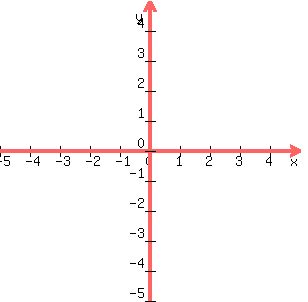Question 81211: write the equation of the line passing through each of the given pairs of points. write result in slope-intercept form, where possible.
Answer by Edwin McCravy(20056)   (Show Source): (Show Source):
You can put this solution on YOUR website! write the equation of the line passing through each of the given pairs of points. write result in slope-intercept form, where possible.
You forgot to give the two points.
Let's say they are these points:
(-1, 3) and (4,-2)
We first plot those two points and draw a line
through them to find out if it is vertical or
not. The equations of all lines can be placed
in slope-intercept form except the equations
for vertical lines. This is the graph we get:
 We see that it is not vertical. So we can proceed
as usual:
We are to find an equation of the line containing
the points (-1,3) and (4,-2)
Use the slope formula:
y2 - y1
m = —————————
x2 - x1
where (x1, y1) = (-1,3) and (x2, y2) = (4, -2)
(-2) - (3) -5 -5
m = —————————— = ————— = ———— = -1
(4) - (-1) 4+1 5
Now substitute in the point slope formula:
y - y1 = m(x - x1)
y - 3 = (-1)(x - (-1) )
y - 3 = -(x + 1)
y - 3 = -x - 1
y = -x + 2
That's the equation in the slope-intercept
form because we can compare it with
y = mx + b
and see that its slope m is -1 and its
y-intercept (0,b) is the point (0,2)
--------------------------------------
If the two points had been (4,-5) and (4,3)
we would have gotten this vertical line:
We see that it is not vertical. So we can proceed
as usual:
We are to find an equation of the line containing
the points (-1,3) and (4,-2)
Use the slope formula:
y2 - y1
m = —————————
x2 - x1
where (x1, y1) = (-1,3) and (x2, y2) = (4, -2)
(-2) - (3) -5 -5
m = —————————— = ————— = ———— = -1
(4) - (-1) 4+1 5
Now substitute in the point slope formula:
y - y1 = m(x - x1)
y - 3 = (-1)(x - (-1) )
y - 3 = -(x + 1)
y - 3 = -x - 1
y = -x + 2
That's the equation in the slope-intercept
form because we can compare it with
y = mx + b
and see that its slope m is -1 and its
y-intercept (0,b) is the point (0,2)
--------------------------------------
If the two points had been (4,-5) and (4,3)
we would have gotten this vertical line:
 and its equation would have simply been
x = 4
because every point on it has 4 for
its x-coordinate.
Edwin
and its equation would have simply been
x = 4
because every point on it has 4 for
its x-coordinate.
Edwin
|
|
|